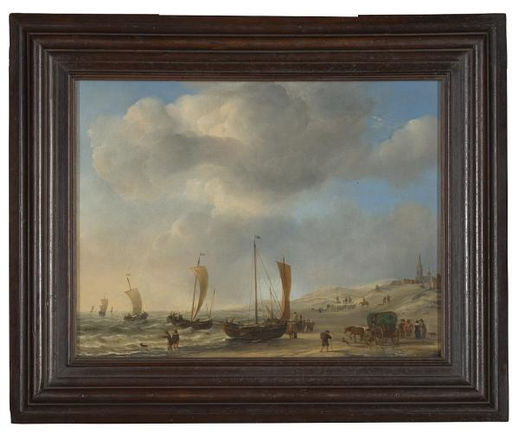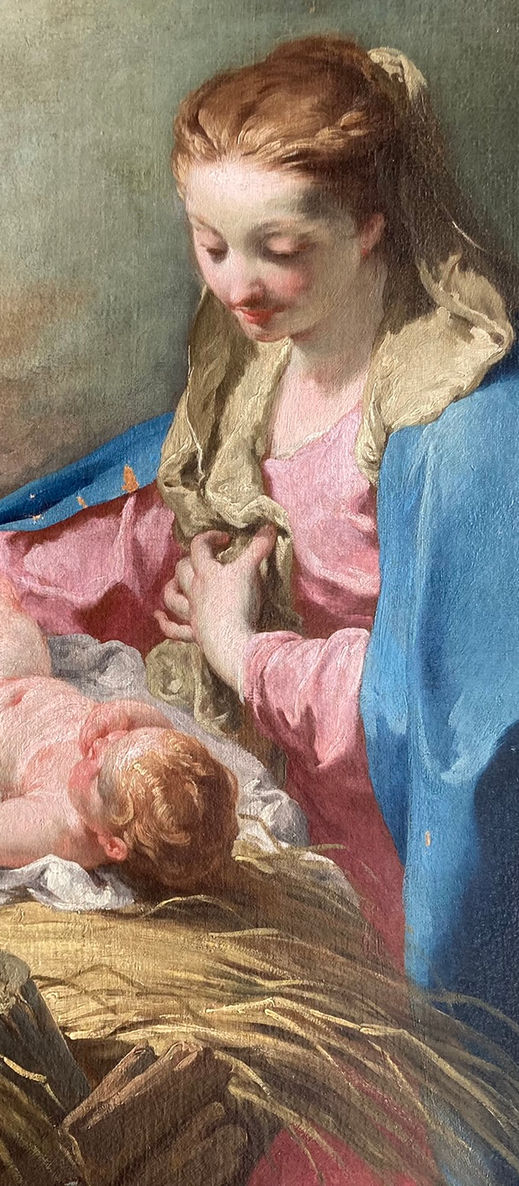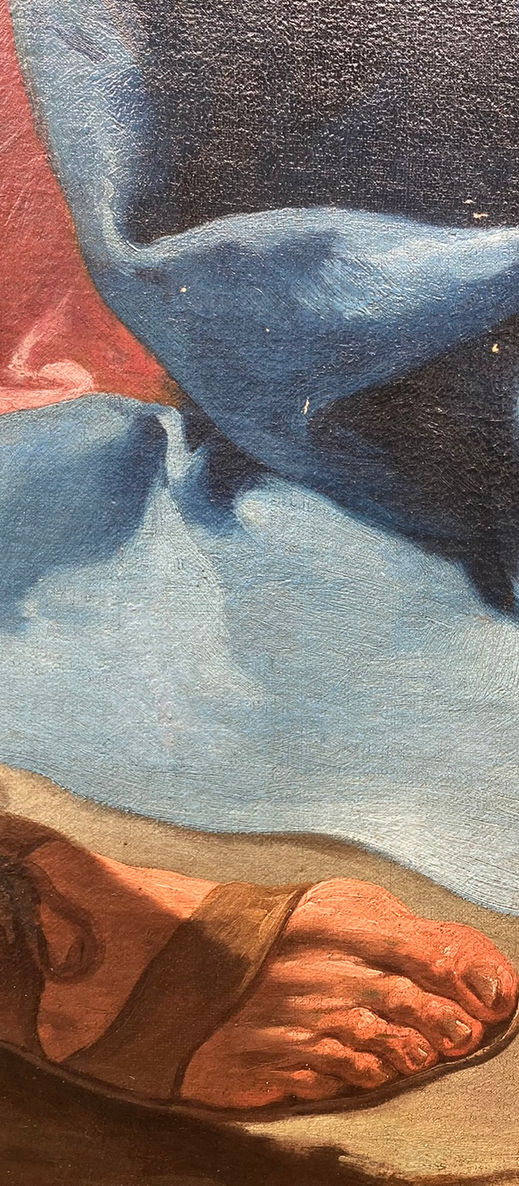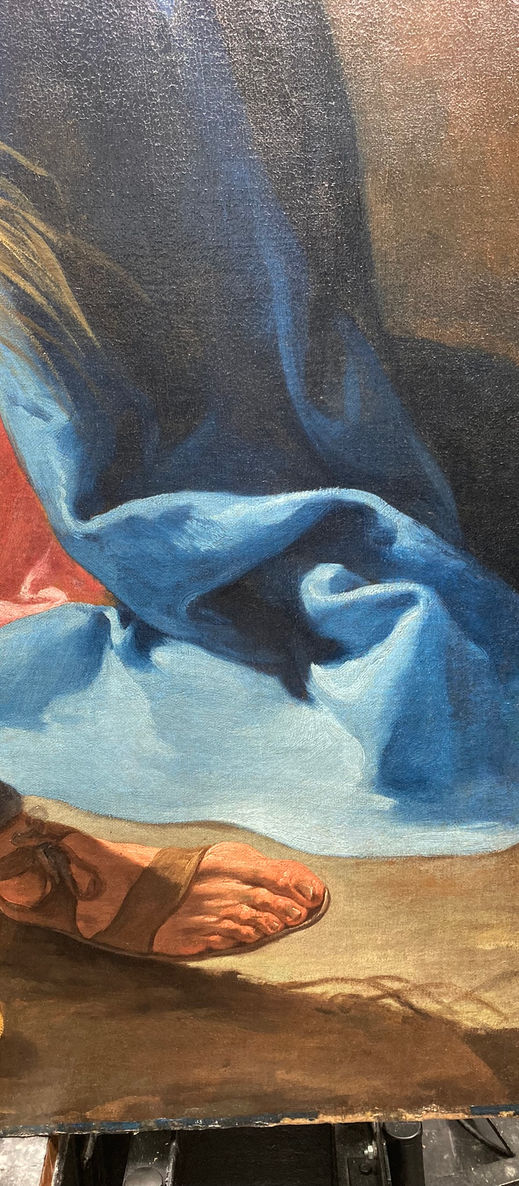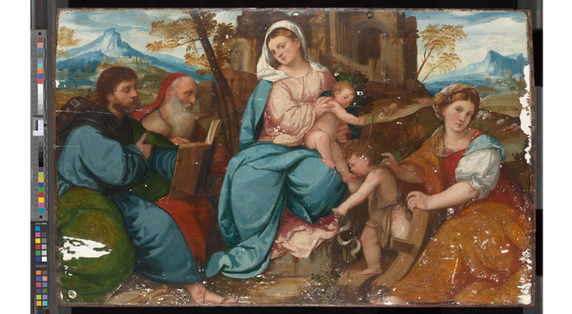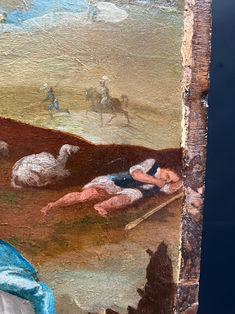Maria Carolina Peña Mariño
Easel Painting Conservator


The National Gallery
Lindsay Conservation Fellow
During the two-year fellowship in the Conservation Department of The National Gallery, London, I conducted solo and collaborative conservation-restoration projects and technical research of paintings from different origins and periods. In addition, I assessed and reported on the condition of paintings in the collection in agreement with UK standards, engaged in preventive conservation activities, and liaised with leading art historians, curators, conservation scientists, exhibition managers, registrars, and art handlers, among other professionals, on large-scale projects such as exhibitions and international loans. I have nationally and internationally couriered paintings, assisted and advised with installations and de-installations, coordinated picture framing, safely handling and packing for transportation. During my time here I also attended continued professional development workshops and took part in outreach activities.
NG873
The Coast at Scheveningen (Ca. 1660)
Willem van de Velde the Younger
The painting is a landscape format canvas measuring 56.8 cm in width by 44.5 cm in height, featuring a wax-resin marouflage technique onto a laminated board. The canvas support is comprised of two pieces: a rectangular section measuring 56.2 cm by 42 cm and an inserted portion at the bottom measuring 2.5 cm in height. Close examination, including X-ray imaging, indicated that the added section was originally part of the upper portion of the painting. It is suspected that this canvas segment underwent cropping, flipping, and repositioning during a restoration campaign conducted before the painting's acquisition in 1871.
Structurally, the support was deemed to be in good condition, with only minor damages observed alongside the addition. Both the main canvas piece and the addition were securely held in place by the existing marouflage, which displayed stability with no apparent degradation of the adhesive or delamination between the fabric and the board.The ground and paint layers exhibited typical aging characteristics, including craquelures, localized losses, and abrasion in the sky. Existing retouches and a discolored varnish negatively affected the aesthetic quality.
The restoration treatment employed a systematic and satisfactory approach. It commenced with the removal of an upper layer of natural resin varnish using a free solvent mixture. An older, degraded varnish layer across the surface was successfully and evenly removed using a tailored aqueous cleaning system. Some retouchings came off during the varnish removal, necessitating partial swelling and mechanical thinning under magnification for stubborn areas. This process aimed to expose the original edge alongside the addition as much as possible.
Although it was established during the examination that the bottom addition originally belonged to the top of the painting, a conservative decision was made to leave it in place, avoiding the removal of overpaint covering this area. Instead, the approach involved framing out this section to maintain the composition's intended arrangement. Post-cleaning, the painting underwent brush varnishing, filling, and retouching.
A 17th-century Dutch frame was refitted during the treatment, considering the added section. The process prioritized preserving the artwork's integrity while addressing structural and aesthetic issues.
NG6279
The Nativity with God the Father and the Holy Ghost
Giovanni Battista Pittoni
After its acquisition in 1958, the painting underwent an extensive restoration at the National Gallery, addressing various issues such as flaking paint, relining, cleaning of old varnish layers, and revealing previously concealed elements, including the figure of God the Father. In the 1980s, additional restoration work focused on deteriorating varnish areas, adjusting disturbing retouching, and re-varnishing.
The recent collaborative project (January 2021-July 2022) involved three conservators at the National Gallery, with Kristina Mandy performing the cleaning and Olivia Stoddard and myself handling the restoration. The cleaning process utilized free solvent mixtures, tailored to the sensitivity of targeted areas. Upper layers of retouching were removed, while lower layers required stronger solvents and mechanical action, especially in areas like the sky over God the Father.
During restoration, brush varnishing, filling, texturing, and retouching were carried out. Old fills were retained but resized and re-textured to align with the painting's original texture. Sculpting existing fills with a scalpel and applying additional filling material reconstructed missing areas of brushstrokes and impastos. Gamblin Conservation Colours® and B72 retouching gel were used for retouching, addressing severe abrasion and skimming caused by overcleaning.
A specific challenge emerged with the robe of St. Joseph, exhibiting paint degradation due to a lead sulphate complex crust. Scientific analysis suggested leaving the crust in place and glazing on top to minimize its aesthetic impact. Retouching also corrected visible pentimenti or minor revisions, such as the presence of two ring fingers in God the Father's right hand, misinterpreted during the 1959 restoration.
Other pentimenti, like the change in position of St. Joseph's right hand's index finger and adjustments to the folds of the Virgin's tunic and robe, were meticulously addressed. X-ray imaging and photomicrographs were crucial in determining the sequence of construction for these elements, ensuring an accurate restoration that respects the artist's original intent.
NG1202
Madonna & Child with Saints James the Greater, Jerome, the Infant Baptist and Catherine of Alexandria. c.1530
Bonifazio de Pitati
The painting is a landscape panel, measuring 119 cm x 75 cm, crafted from poplar with a distinct horizontal grain. Constructed from two horizontally butt-joined, radially cut boards, the panel has undergone significant thickness reduction, displaying a stable condition but notable convex curvature and gull-wing deformations. Splits in the upper board, addressed in the past, persisted with minor steps. Additionally, there were scattered woodworm exit holes and small losses along the perimeter.
Fitted with a walnut cradle in 1886, a panel tray replaced it in 1992, contributing to an intensified curvature. To rectify this, during this intervention, a new spring-loaded strainer, meticulously crafted from Sitka spruce plywood, was installed. This procedure was guided and supervised by Britta New and executed by me and technician Juraj Grac. The process satisfactorily ensured the structural stability of the panel and secure manipulation.
At the time of the condition assessment, the ground and paint layers were mostly stable, but there were big damages (St. James' drapery and body of the Sheppard), pigment degradation (orpiment and faded red lakes), and micro-flaking across the surface. Extensive, discolored retouching, especially on the faces of the Virgin, Child, and St. Catherine, marred the surface.
The front of the picture underwent a meticulous treatment involving varnish removal and lifting surface retouches. Initial cleaning revealed a degraded organic coating, particularly on St. James' drapery, bringing out original copper green glazes. Overpaint on the saint's right knee required delicate removal under a microscope.
Despite significant improvements post-cleaning, original damages were unveiled, including paint losses and degradation of the copper light green paint, affecting the three-dimensional effect. Cleaning St. Catherine's drapery proved challenging due to arsenic sulfide pigment degradation.
The subsequent process involved brush varnishing, filling, and retouching, with special consideration given to damaged green and orange passages. Retouching efforts focused on reconstructing damaged areas sympathetically, piecing together shapes for depth and volume. The decision to reconstruct the upper body of the sleeping shepherd, guided by consultation and curator input, was a meticulous choice.
The frame underwent modification to accommodate recent structural treatment.
NG6197
The Valley of the Dee with Chester in the distance (1761)
Richard Wilson
The painting is on a medium-weight linen canvas, glue-paste lined, with a wood stretcher and intact keys. Despite structural stability, a small tear was present along the bottom left edge of the stretcher.
The ground and paint layers, though slightly compressed during lining, showed acceptable conditions. The surface displays various cracks, including aging, circular, stretcher-bar-associated, and drying cracks mostly in the foreground, the latter being the painting's more disturbing feature. Losses and retracted upper layers of paint were evident, particularly to the left, where they were filled (untextured) and toned (not fully retouched). Raised ridges appeared near the fills to the right of the female figure. Retouches and repaints were present along most drying cracks and localized areas of the sky. The painting had a discolored, matte coating affecting color balance, and UV examination revealed a milky green fluorescence layer, likely a natural resin varnish.
The painting underwent a comprehensive surface cleaning, with the removal of yellowed thick varnish coatings using free solvents. Overpaint was mostly removed alongside the varnish, although some sensitivity in the foreground necessitated meticulous cleaning due to the likelihood of a resin-rich medium. Fills along the widest drying cracks were entirely removed, revealing dark and stubborn overpaint, which was mechanically addressed. Cleaning the sky posed challenges, especially due to cloud reworking.
The artwork is currently in restoration. The gaps of exposed ground left by the retracted paint were textured using Paraloid Gels to mimic the drying crack effect and achieve an even surface texture. Retouching with Gambling Colours is at present taking place to bring together the drying crack, minimizing its disturbing effect and restoring the readability of the image and aesthetic qualities.
The tear in the lining canvas has been successfully mended.





















